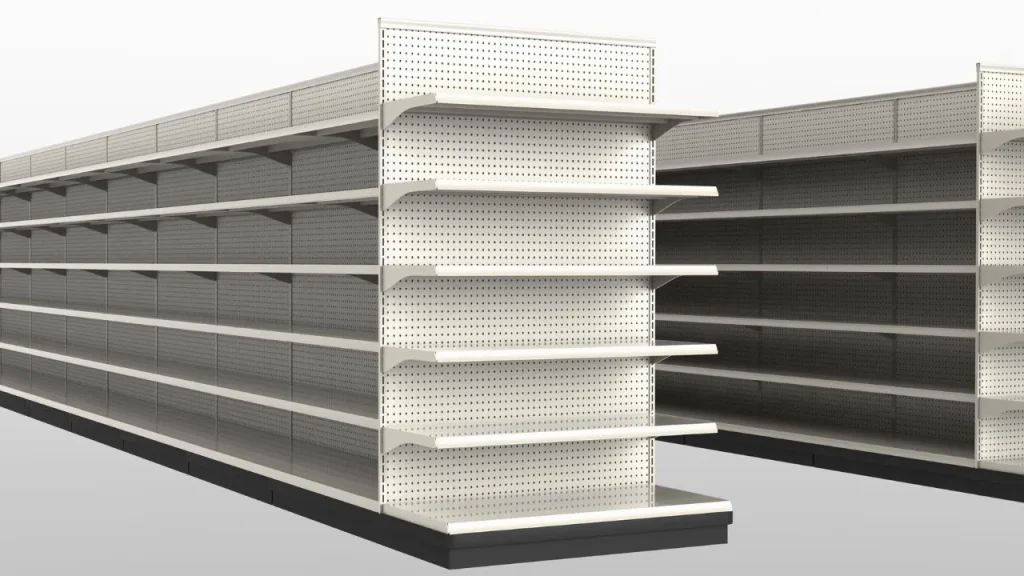When managing a retail or warehouse space, selecting the right storage system is crucial to maximise efficiency and optimise space. This blog compares two fundamentally different storage solutions: gondola shelving and drive-in racking. Each system offers unique benefits, depending on your operational goals and the environment in which it will be used.
The Importance of Understanding Gondola Shelving
Gondola shelving is a versatile and accessible storage solution primarily used in retail environments. This type of shelving is free-standing and can be easily adjusted to accommodate different product sizes, which is essential for retail settings where inventory can vary significantly. The flexibility in layout and easy accessibility not only help in effective merchandise display but also enhance customer experience by allowing shoppers to easily browse and retrieve products.
Retailers can benefit from the adaptability of gondola shelving to create dynamic store layouts that attract customers and boost sales. Furthermore, gondola units can be outfitted with various accessories, such as hooks and baskets, making them even more functional for displaying a diverse range of products.
How to Use Drive-In Racking to Optimise Your Warehouse Space
Conversely, drive-in racking is ideal for warehouse environments where space optimisation is key. This storage system is designed to allow forklifts to drive directly into the rack lanes to store and retrieve pallets. It is most suitable for storing large quantities of similar items and can significantly increase storage capacity by reducing aisle space and utilising vertical space.
Drive-in racking systems are best used for items that require bulk storage and have a longer shelf life, as this system follows a Last In, First Out (LIFO) inventory method. They are particularly effective in industries where space efficiency is more critical than selectivity, such as wholesale, cold storage, and bulk goods storage.
Comparing Structural Differences and Efficiency Between Gondola Shelving vs. Drive-In Racking
The structural differences between gondola shelving and drive-in racking highlight their suitability for different uses. Gondola shelving units are generally lighter and designed for manual access, making them unsuitable for heavy-duty warehouse use. On the other hand, drive-in racks are built from more robust materials to support heavy loads and frequent access by forklifts.
Efficiency-wise, gondola shelving allows for high visibility and easy access, making it efficient for environments where consumer interaction is frequent. Drive-in racking’s efficiency comes from its excellent space utilisation, making it ideal for warehouses that need to maximise storage density.
How to Choose Between Gondola Shelving vs. Drive-In Racking
To choose between gondola shelving and drive-in racking, consider your business’s specific needs. For retail environments where customer interaction and product visibility are priorities, gondola shelving is the recommended choice. It offers the flexibility and accessibility needed in a dynamic sales environment.
For warehouses where space utilisation is crucial, drive-in racking offers an efficient solution. It maximises storage capacity and is best for storing similar or identical products.
Conclusion of Gondola Shelving vs. Drive-In Racking
Choosing the right storage solution plays a pivotal role in the functionality and efficiency of your business operations. Whether you opt for the flexibility and customer-friendly features of gondola shelving or the space-efficient and bulk storage capabilities of drive-in racking, ensure the system aligns with your operational goals and space management requirements. For more information on warehouse storage options or to discuss your storage needs, contact us today.
By understanding the specific benefits and limitations of each storage system, businesses can make informed decisions that enhance their operational efficiency and meet their storage demands.
